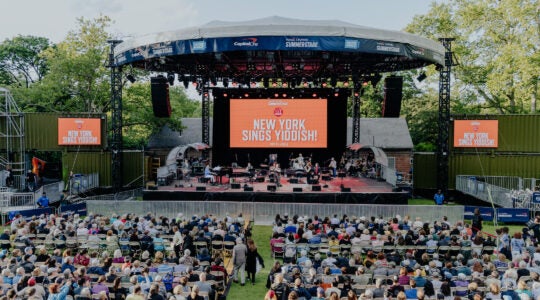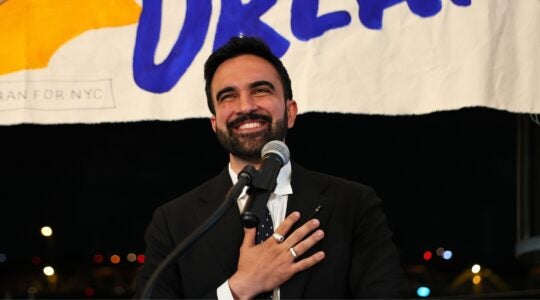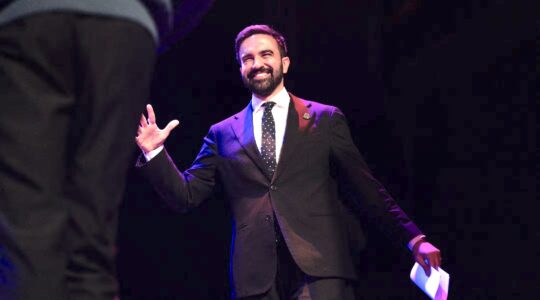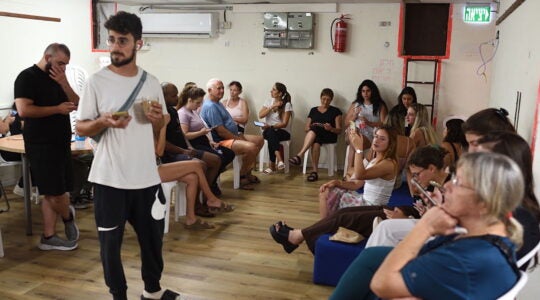A photo from 2010 of Elisheva Blas with Matthew, one of the participants in Camp Ramah in New England's inclusion program.
Editor’s Note: This article was one of the finalists in our winter writing contest. More than 70 contestants from around the country and Israel answered the following question: “What Do You Want Jewish Community Leaders To Know About Teens Today?”
Jewish leaders should know that teens today are ready for a more inclusive community. As a 10-yearold camper at Camp Ramah in New England, I shared a bunk with a member of the Inclusion Program — a program in which children with disabilities live with their neuro-typical peers. Spending my summers with A, a girl who has a range of cognitive and behavioral disabilities, taught me about true inclusion.
Because we were the same age, A and I related on a personal level. I was able to see past her differences and recognize her incredible personality. I did not think twice before spending time with A; we swam, played sports, climbed the rock wall and participated in all of the typical camp activities together. Living in an accepting environment at such a young age made inclusion natural, even instinctive, for me.
I have grown up in a world where inclusion is a priority. Individuals with differences — learning difficulties, physical or medical issues or with familial problems — are accommodated in schools, camps and synagogues. Children learn to accept those differences without A second thought. Adopted children, for example, attend Jewish schools and camps, and children with gay parents have bnai mitzvot in synagogues. Inclusion has become second nature to young adults who have become accustomed to the mentality that differences are “no big deal.” Jewish institutions have begun to embrace acceptance, but teenagers today are ready for a more inclusive community. Our community leaders must work to replicate the inclusion model that I experienced at summer camp.
Throughout history, Jews have been considered The Other. We have continuously been ostracized and excluded because of our beliefs. My generation has been fortunate enough to not have experienced any such alienation; we were born into a world where we can feel comfortable displaying a chanukiah or wearing a kipa in public. Now the Jewish community has the opportunity to open its arms to include those who are still alienated from society.
At a time when assimilation is at an all-time high, it is crucial that we respect others despite differences — whether those differences are religious, educational, socioeconomic or political. We must reach out to others regardless of their levels of observance or particular appearance and include them in any way possible. Teenagers embrace this philosophy by performing community service. We visit cancer patients, tutor less-affiliated children in Jewish studies, package food for the homeless and spend time with the elderly.
The ideal Jewish leader will promote acceptance rather than conformity. While conventionality forces individuals to change themselves, inclusion helps create a more diverse, unique community. Rabbi Sir Jonathan Sacks writes in his book, “The Dignity of Difference: How to Avoid the Clash of Civilizations,” that inclusion connects us to God because “we encounter God in the face of a stranger. … God creates difference; therefore it is in one-who-is-different that we meet God.” If leaders recognize that young adults are prepared for inclusion, we can help facilitate these changes in our community. We are ready to move forward and take the next step in creating a more inclusive world.
The New York Jewish Week brings you the stories behind the headlines, keeping you connected to Jewish life in New York. Help sustain the reporting you trust by donating today.




